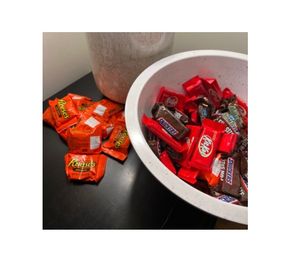Halloween Logistics
Halloween was scarier than COVID this year. Not because of the spooks and goblins, but because of something I heard more than once around my neighborhood. Parents were asking, “what time does trick or treating start? Where we moved from, there was an agreed upon schedule.” What!? Since when is there a scheduled trick or treat time?
Then it dawned on me. This may be a factor for why the supply chain is so messed up. It’s not only because of COVID. It may be because the logistics and supply chain managers never got to plan Halloween activities by themselves.
Think about the skills and knowledge gained by the neighborhood kid posse through planning Halloween. Costumes must be coordinated so that each of the Marvel Comic characters is represented and not every member of the posse is costumed as Captain America. Halloween teaches logistics as the posse must decide on an agreeable starting time as well as the route through the neighborhoods. (Please note, the posse determines the start time, not some committee of grown-ups.) This is critical. The posse needs to make sure to get to the neighborhood with full size candy bars before they run out and still get to the home neighborhood before curfew, all the while making sure that the pillowcase is full of good candy and not Skittles, or worse, Werther’s toffee. And don’t forget, there needs to enough to account for the daddy tax…he gets his choice of the goods for ignoring the inevitable sugar rush (or worse) that follows a night of unfettered fun sized candy bar consumption. Year after year of Halloweens fine tune planning and logistics skills.
But this is not all. Next comes the sorting and negotiation phase. Once home, the sweets are sorted by order of goodness. Chocolate is at the top, followed by tangy candy, and lastly hard candy. Each category is also neatly sorted. For example, 1. Reese’s Nutrageous Bars, 2. Classic Reese’s Peanut Butter Cups, 3. Pearson’s Nut Rolls, 4. Right Twix, 5. Left Twix, 6. All other chocolate, and 7. Everything else. As sorting is completed, then starts the negotiation-with-the-siblings phase, all to augment the chocolate peanut stores. One always starts low, “I’ll trade one SweeTart for a Reese’s Peanut Butter Cup.” Nobody in their right mind would make that trade. You might be successful once with the youngest sibling before mom functions as the Federal Trade Commission and blocks the transaction. (And just where did she get that Reese’s she’s eating?) Eventually the market determines the hard candy to chocolate ratio and negotiations proceed. They get more intense year after year as the siblings gain their own experience and skill.
Bill Doherty, PhD, a professor of family and social sciences at the University of Minnesota has studied the concept of overly protective parents as well as the skills that children develop through unsupervised play. As an insufficient summary of his extensive work, he discourages too many adult-planned, supervised, and refereed activities, and instead recommends activities that encourage imaginative play, self-enforcement of the rules, and interpersonal negotiation.
COVID is obviously the driver of much of society’s challenges including supply chain challenges and I don’t mean to diminish it. However, I do think adults may do too much like “scheduling trick or treating.” Now I think I’ll eat one of the Reese’s I rescued from the rest of the candy we handed out.

Jeffrey G. Chipman, MD, FACS
Frank B. Cerra Professor of Critical Care Surgery
Division Head, Critical Care, and Acute Care Surgery,
University of Minnesota
Executive Medical Director, Critical Care Domain, M Health Fairview